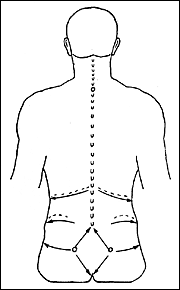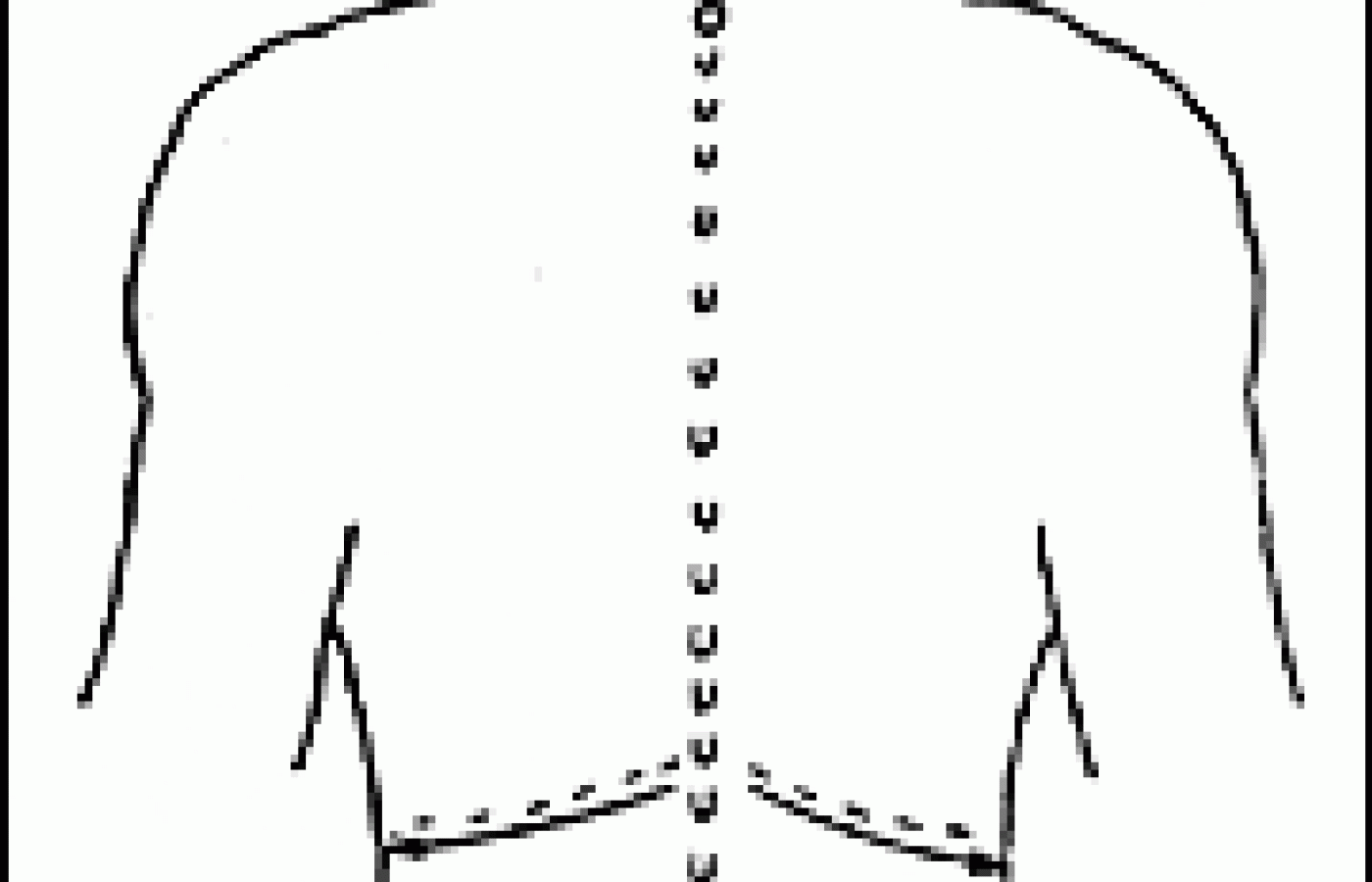You became a chiropractor to serve people, not an insurance company. You deserve to run a business that aligns with your values, supports your family and lights you up. Cash-based care isn’t just a pricing model – it’s a philosophy rooted in freedom, trust and respect for your patients and for yourself. Here's why - and how - to do it.
Neurofascial Therapy: Mastering Cutaneovisceral Reflexes
Over the 20 years I've been involved in chiropractic, there has been a welcome diversifying of chiropractic methods. Augmenting our skills in joint manipulation, a variety of soft tissue methods have become fairly standard components of the chiropractic repertory. Many chiropractors also make use of rehabilitative exercise protocols and other techniques.
Yet there is another major manual therapy method that is almost unknown to chiropractors. Neurofascial therapyTM (NFT) was developed in Europe, beginning in the 1920s, but is little known here. In Germany it is known as Bindegewebsmas-sage. The method has been described by Goats (1991), Michalsen (1993) and others. It consists of a series of light, transverse strokes delivered with the tip of the practitioner's third finger, which create friction in the superficial fascia and stimulate the embedded mechanoreceptors. This causes a distinct sensation that is the hallmark of NFT. The patient experiences a sharp, cutting sensation, like the nib of a fountain pen drawing a fine line on the skin. The pulling stroke that elicits the characteristic cutting sensation is the key to NFT. It elicits a local reaction and, most importantly, initiates a cascade of neurological reflexes.
The local reaction is characterized by the appearance of a thin red line of hyperemia where strokes have been applied. There is local vasodilation and histamine release. Linear-shaped wheals may appear as a result. Like other forms of connective tissue treatment, NFT also stimulates fibroblast activity, aiding soft tissue healing and remodeling.

In addition to these local effects, specific patterns of strokes are thought to stimulate specific segmental and extra-segmental cutaneospinal and cutaneo-autonomic reflexes, leading to improved autonomic regulation, an enhanced internal state of the central nervous system, and diminished pain.
Figure 1 illustrates some of the stroke patterns used in the pelvis and lumbar areas. These areas are typically treated early in the course of care. The rationale is that the mechanoreceptor input from NFT strokes will have the strongest reflex effect on the outflow from the same spinal segment in which it enters the cord, with a diminishing effect at more and more distant spinal segments. Treatment of the low back regions will thus enhance parasympathetic tone, and this is the optimal starting point for most patients. Stimulation of the thoracic and ribcage regions, thought to more strongly enhance sympathetic outflow, is often introduced later.
NFT is used in specific zones, depending on the internal organ, pain process or disease state that is targeted. This is similar to segmental manipulation schema based on neuroanatomy, and other manual therapy techniques that link specific surface zones to particular organs or problems. Like other manual therapy techniques, palpation is used prior to treatment and concurrently with it; treatment is modified along the way as palpatory findings dictate. In addition to feeling for myofascial tightness and trigger points, the feeling of glide of the subcutaneous fascia relative to underlying layers is the key palpatory feedback factor in NFT. An abnormal adherence of the subcutaneous fascia indicates the need for treatment. When this abnormal adherence can be palpated in the "expected" reflex zones, it provides confirmation that the treatment is being directed at the most important areas. Even better is when the palpatory feeling shifts as a result of treatment; this provides additional confirmation.
The appearance and robustness of hyperemia and the wheals indicative of histamine release are other feedback indicators of effective treatment. Since shifts in autonomic tone are brought about by the technique, overzealous treatment can result in responses such as nausea, faintheadedness, or even (though thankfully not in my experience) syncope. I tell my patients that these effects are transitory. Fortunately, none of them has ever proved me wrong by persisting with these responses.
NFT can potentially give benefit in many chronic pain syndromes, as well as in any condition with an autonomic dysregulation component. The model by which NFT is postulated to work - normalizing cutaneovisceral reflexes - parallels the somatovisceral reflex model of the effects of spinal joint manipulation. Therefore, the range of potential applications for the technique should be familiar to chiropractors. Fibromyalgia is one syndrome for which I use it extensively. Abnormalities of the central nervous system (Weigant, 1998), dysautonomia (Mense, 2000), and alteration of descending pain-modulating pathways (Martinez-Lavin, 2000) have been postulated as possible contributory mechanisms in fibromyalgia.
Since the cascade of reflex effects stemming from NFT is thought to influence all of these mechanisms, a theoretical rationale for the effectiveness of NFT exists. In addition to my own clinical experience of successful fibromyalgia treatment, Brattberg (1999) studied the use of NFT for fibromyalgia, and was able to document benefit to the treatment group as compared to controls. I have recently begun a clinical study that hopes to amplify these findings.
Examples of other applications include: headache and migraine; abnormalities of respiratory control such as asthma; kidney stones; and digestive distress due to underfunctioning of the liver and gall bladder. I have successfully alleviated an episode of benign atrial tachycardia with NFT as well, restoring normal cardiac rhythm, at least in the short term.
Another range of applications of NFT is the treatment of tendonitis, capsulitis, and irritations of other non-contractile connective tissue, particularly in the chronic phase. NFT can work directly on tendons and other superficial connective tissues in a more gentle way than friction massage, myofascial release, and their variants.
Case Histories
- Ms. C., 47, suffered from severe chronic headaches since 13. Her condition was worsened by a car accident in her late teens that fractured C4 and crushed her right hand. Over the years, her pain levels worsened. She began to experience fibromyalgia-type pain throughout her spine and arthritic-type pain bilaterally in the ankles and elbows. Treatment began twice per week. She noticed diminished spinal pain after the first two sessions. After two months of treatment, her fibromyalgia symptoms were limited to an occasional mild flare-up. Her neck range of motion improved and the intensity of her headache diminished. Her ability to perform the activities of daily living improved considerably.
- Ms. S., a 60-year-old artist, had a biking accident that tore up her left knee. Surgery was performed to repair the anterior cruciate ligament, but pain persisted with activity, spreading to the right low back, buttock, and thigh. She noticed a hardened, tender zone in the lateral right thigh. The left knee became swollen again with limited range of flexion and extension. She could no longer bike or hike, and even daily activities like climbing stairs were painstaking. Any attempt at therapeutic exercise backfired, leading to more pain. She noticed improvement in the right lateral thigh beginning with the first Neurofascial therapy treatment. Within three to four treatments, she was able to climb stairs and resume most normal daily activities. Treatment was also given to the left knee, which reduced swelling and restored normal range of motion. She was able to exercise again, which speeded her improvement even more.
- Ms. B., a 62-year-old school psychologist, had a moderate case of fibromyalgia as diagnosed by her rheumatologist. She received treatment initially twice per week until substantial improvement was noted. She subsequently maintained effective symptom relief with treatment every three weeks.
- Mr. Z. had chronic mild to moderate bilateral aching pain in the thoracic spine, exacerbated by stress and sedentary posture. In addition, he experienced two to three bouts of bronchitis each winter, with each bout lasting two to four weeks. With treatment twice per week for three weeks, his thoracic pain diminished markedly in intensity and frequency. Over the subsequent three winters, even without further treatment, he had no additional bouts of bronchitis
- Ms. D., 42, had bilateral congenital hip dysplasia that had not been addressed at birth. Prior to treatment, she walked with great difficulty and feared she would be unable to continue with her nursing career. Immediately after the initial treatment, she was able to walk with greatly diminished pain and, within three days, was able to return to work, at times working twelve-hour shifts on three or four consecutive days. After a dozen treatments, she was able to remain ambulatory for more than four months without further treatment.
- Mr. W., a 50-year-old lawyer, had constant, severe left upper extremity pain for two weeks prior to seeking treatment. An MRI showed a bulging lower cervical disc. Symptoms increased with cervical compression. Carriage of the shoulder girdle was also an exacerbating factor, since he obtained some relief by resting his arms on the armrest of a chair. He was unable to walk or lie down without severe discomfort. A neurosurgeon had recommended surgery. After the initial treatment with neurofascial therapy, he felt a marked diminishment of symptoms and was able to walk and get a decent night's sleep for the first time in two weeks. A subsequent treatment relieved his pain even more completely.
- Dr. C. is a 72-year-old semi-retired psychiatrist. Over the past six years he experienced the gradual onset of low back and left buttock pain, along with weakness and numbness of the left thigh. His ability to walk was limited. Based on an MRI, he had been given the diagnosis of spinal stenosis. After 10 treatments, once per week, his symptoms abated considerably. He has occasional mild pain and paresthesia, but he is able to walk a normal distance.
Summary
Because it is gentle, effective, and versatile, I make more extensive use of NFT than any other method. It comes in handy for patients, such as older persons, for whom a gentle approach is warranted. In many cases, it may be the only form of treatment I provide. At other times I use it in combination with other manual therapy methods.
In its theoretical model there are many parallels with chiropractic principles, and therefore it would integrate well with existing chiropractic methods. It is suitable in situations in which other forms of manual therapy are inappropriate or of lesser benefit. Therefore, based on my experience, NFT has the potential to become a widely recognized component of modern manual therapy practice.
References
- Goats GC, Keir KA. Connective tissue massag., Br J Sports Med, 1991 Sept;25(3):131-33.
- Michalsen A, Buhring M. Connective tissue massage. Wien Klin Wochenschr, 1993;105(8):220-7.
- Brattberg G. Connective tissue massage in the treatment of fibromyalgia. Eur J Pain, 1999 June;3(3):235-244.
- Weigent DA, Bradley LA, Blalock JE, Alarcon GS. Current concepts in the pathophysiology of abnormal pain perception in fibromyalgia. Am J Med Sci, 1998 June;315(6):405-12.
- Mense S. Neurobiological concepts of fibromyalgia - the possible role of descending spinal tracts. Scand J Rheumatol Suppl, 2000;113:24-9.
- Martinez-Lavin M, Hermosillo AG. Autonomic nervous system dysfunction may explain the multi-system features of fibromyalgia. Semin Arthritis Rheum, 2000 Feb;29(4):197-9.
About the author: Ronald Lavine, DC, is a 1980 graduate of New York Chiropractic College. He has practices in New York City, and Princeton, New Jersey. In addition to his work in the development of NFT, he serves as secretary of the New York Academy of Traumatic Brain Injury, and has experience in the treatment of dancers, presenting his work at meetings of the International Association of Dance Medicine and Science.



